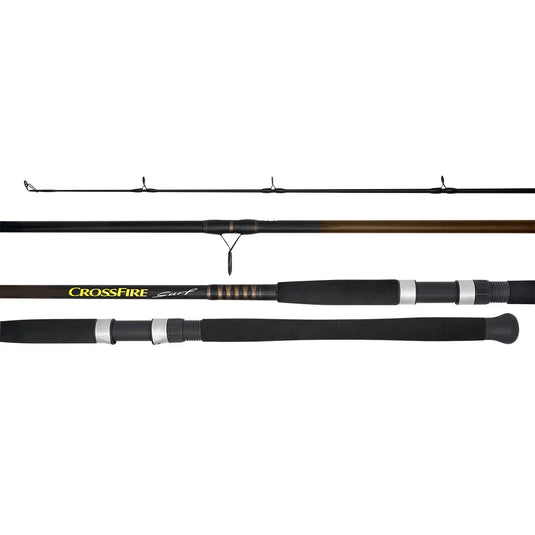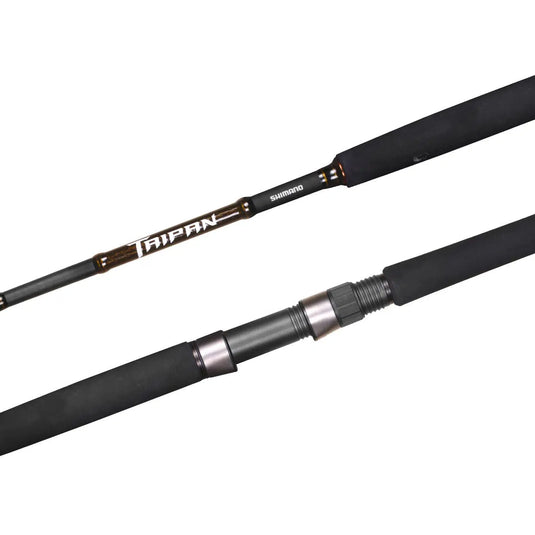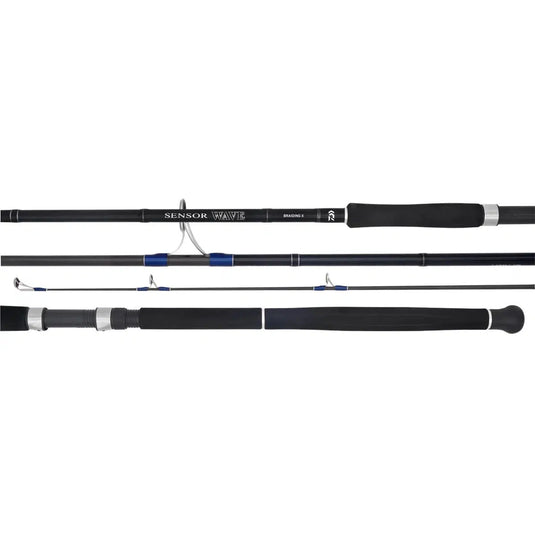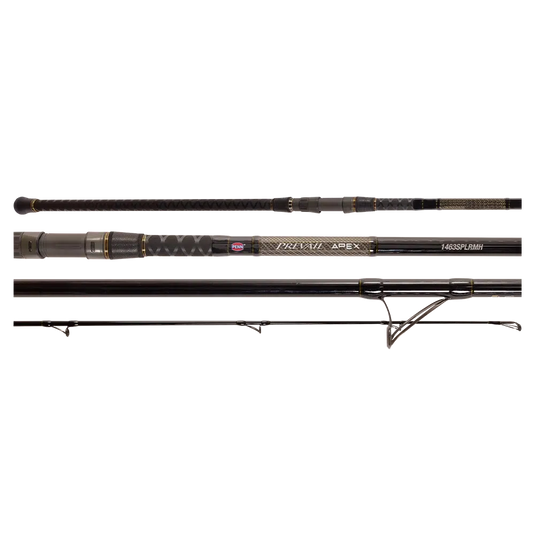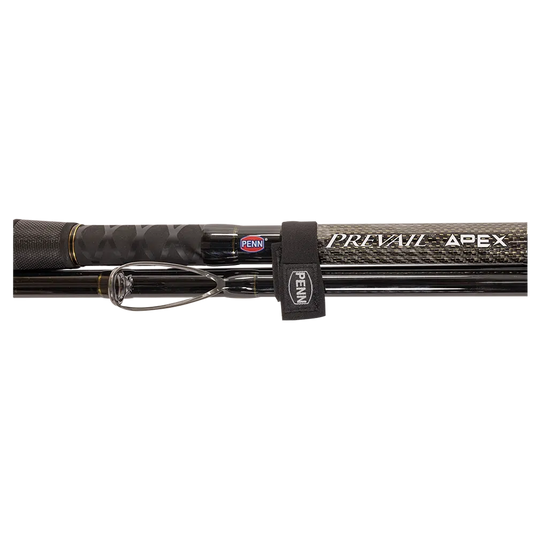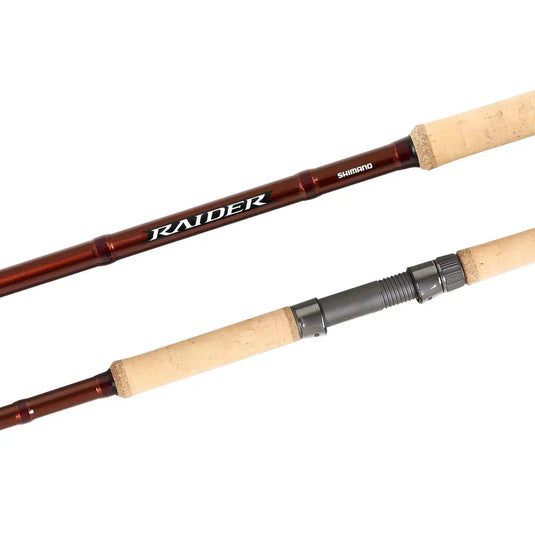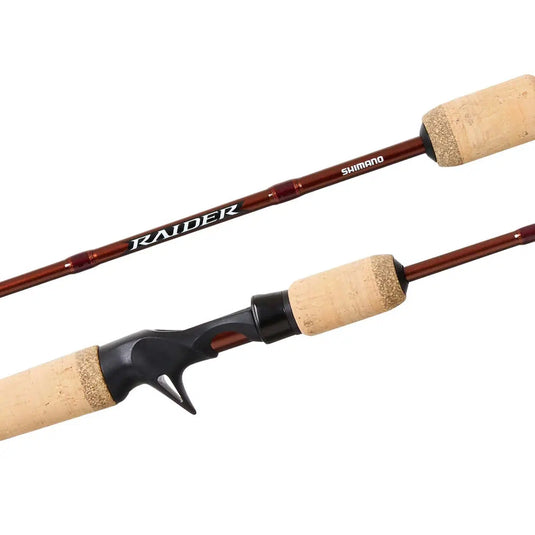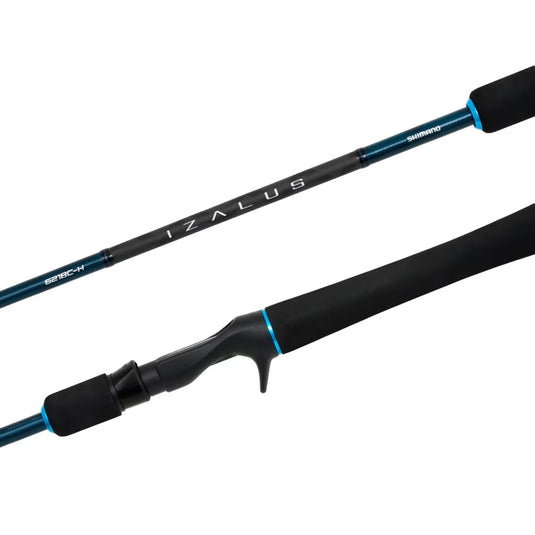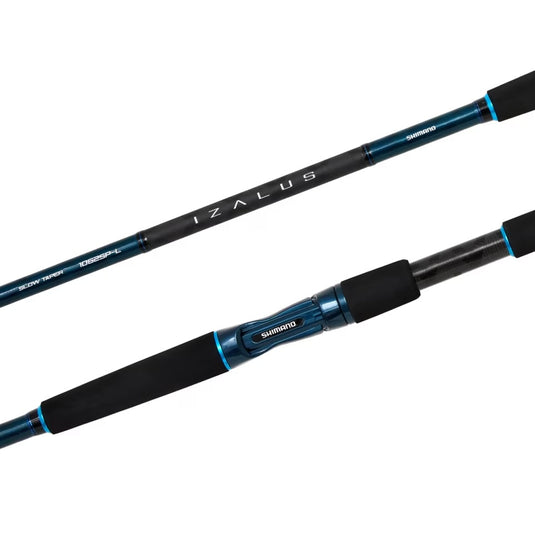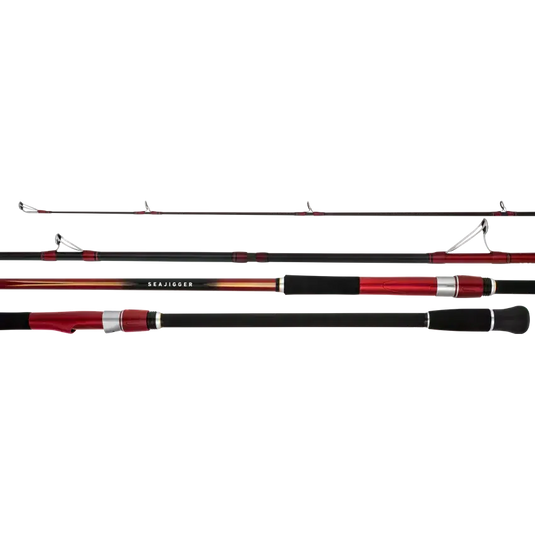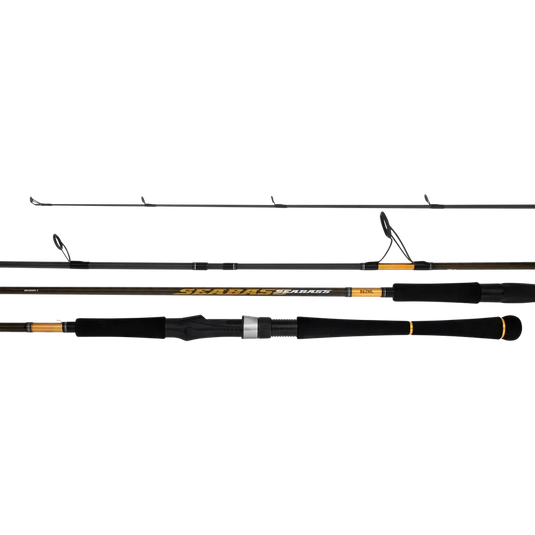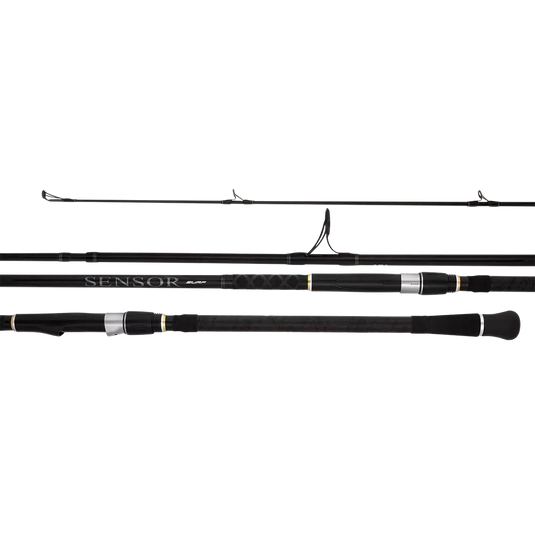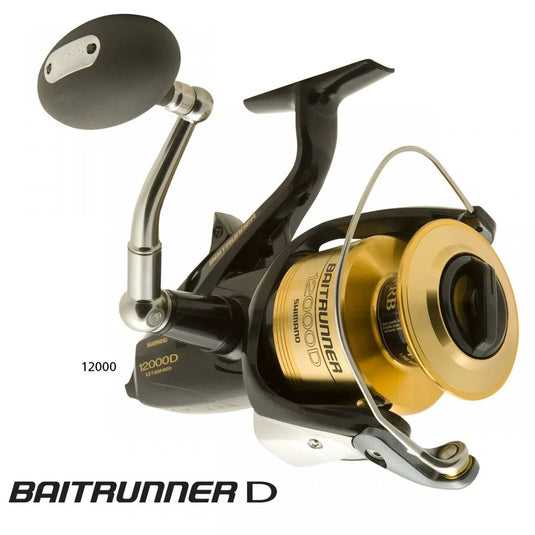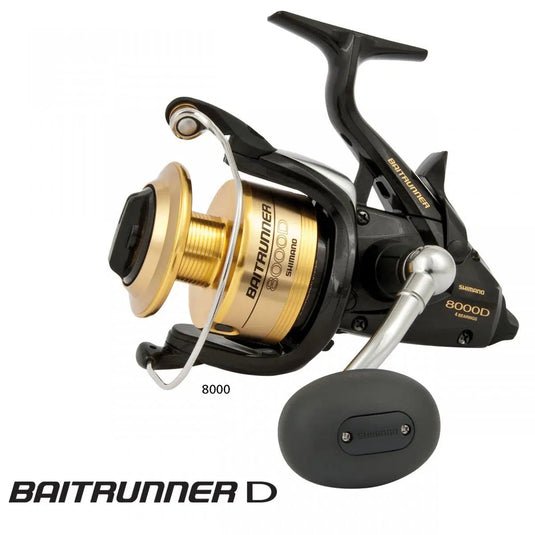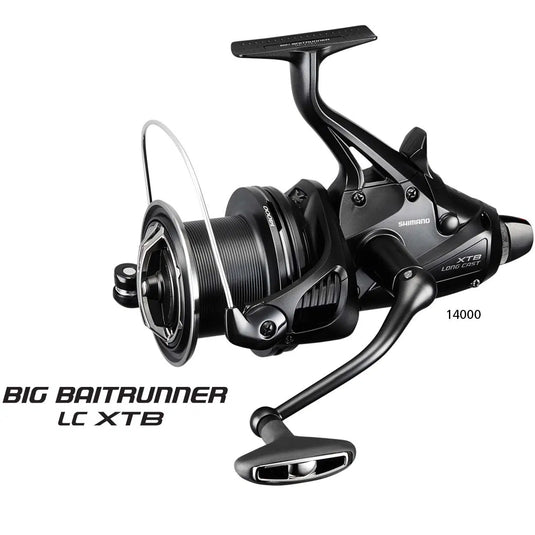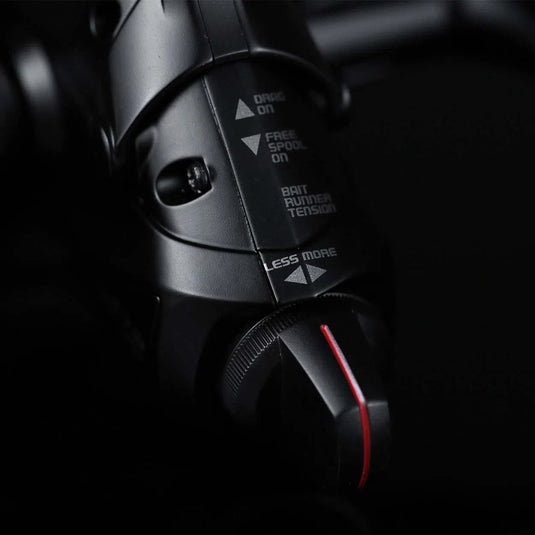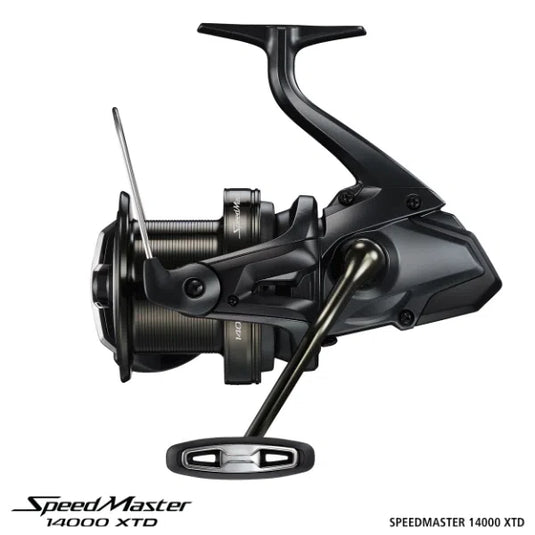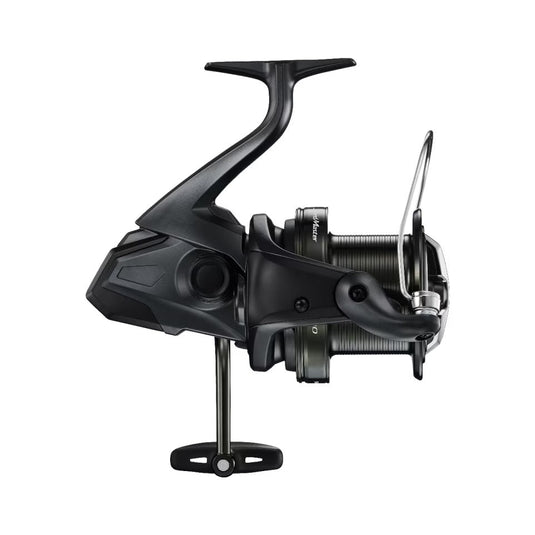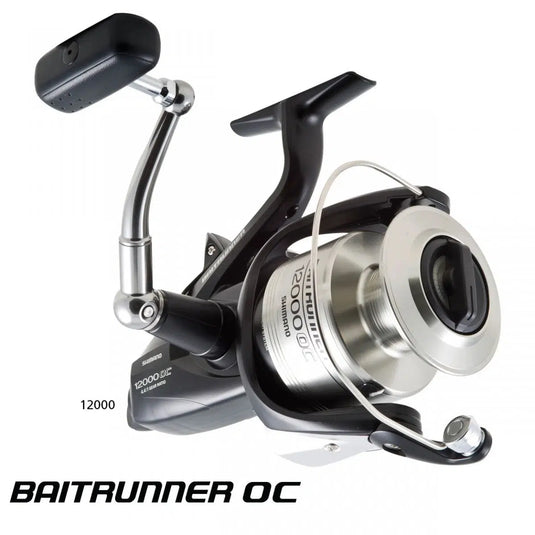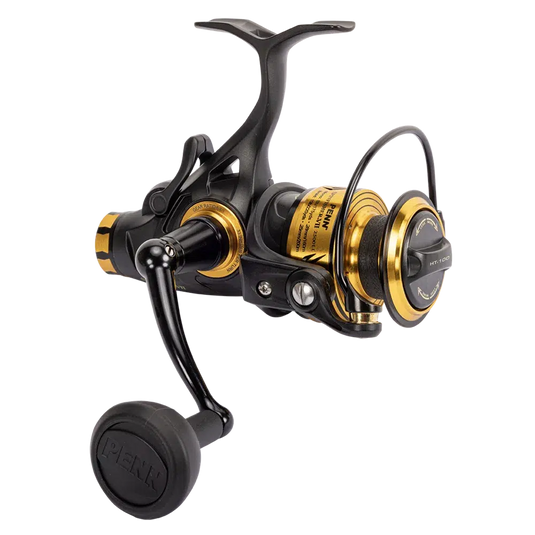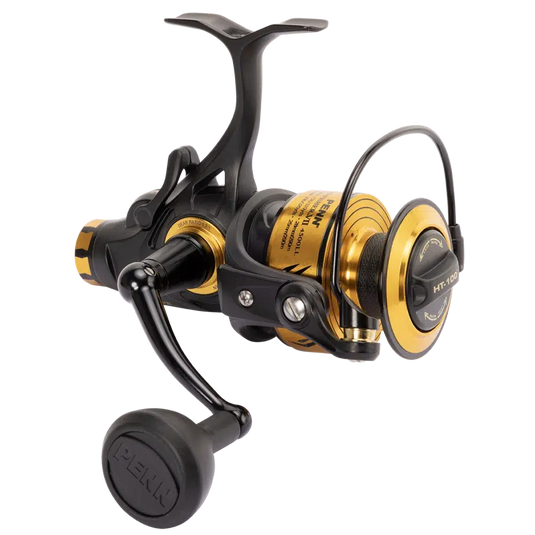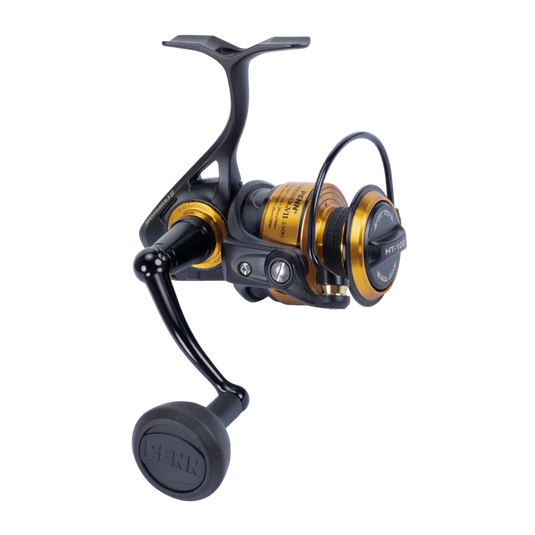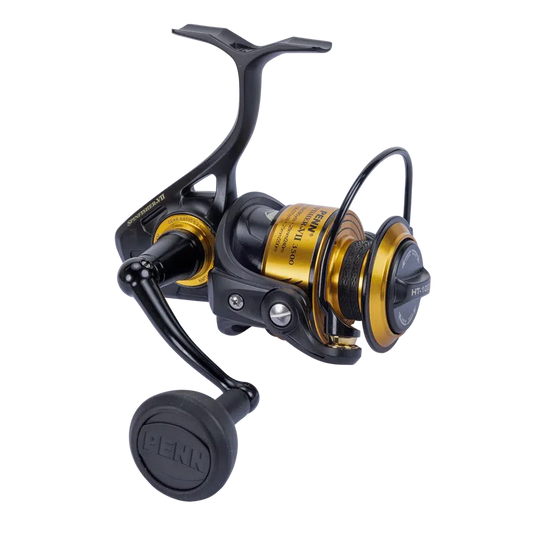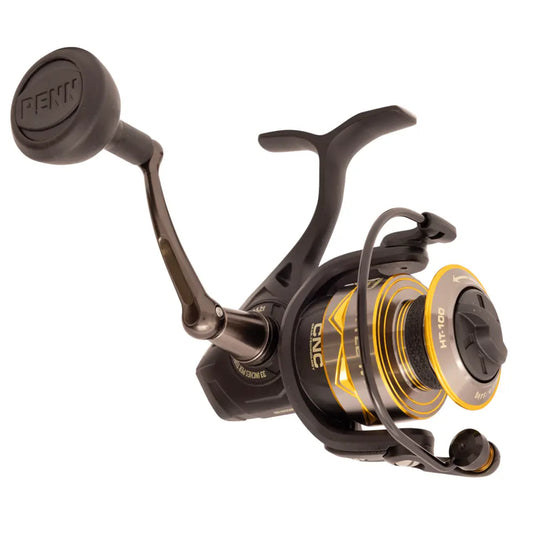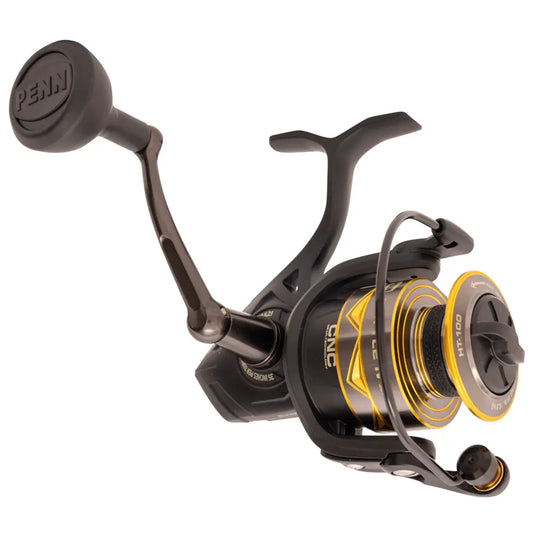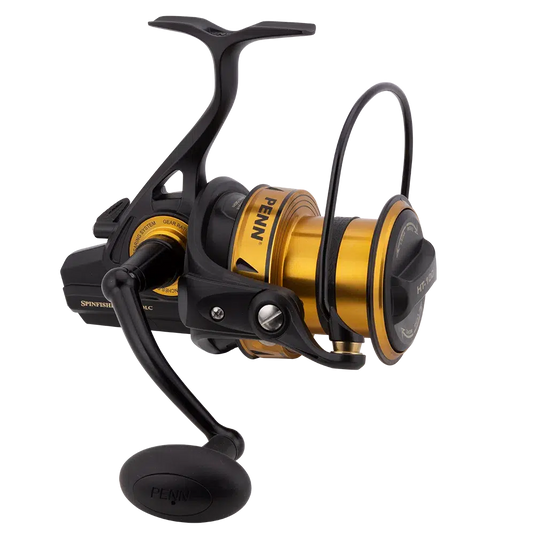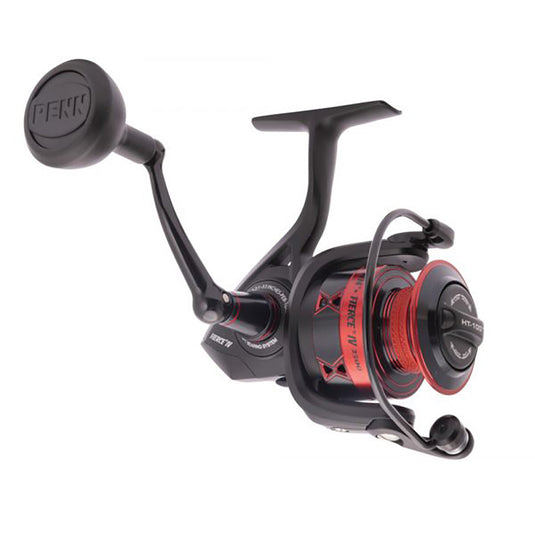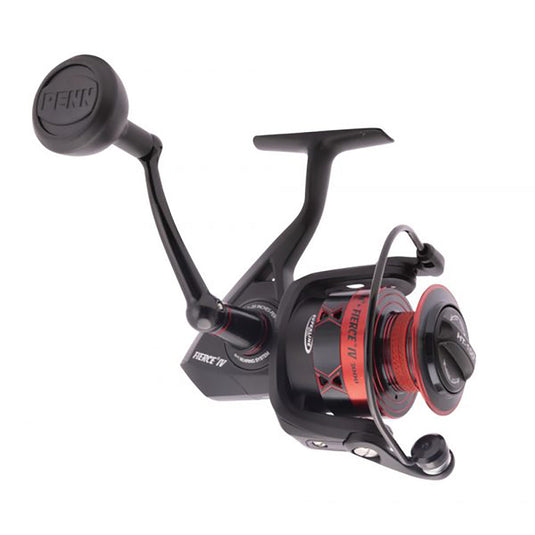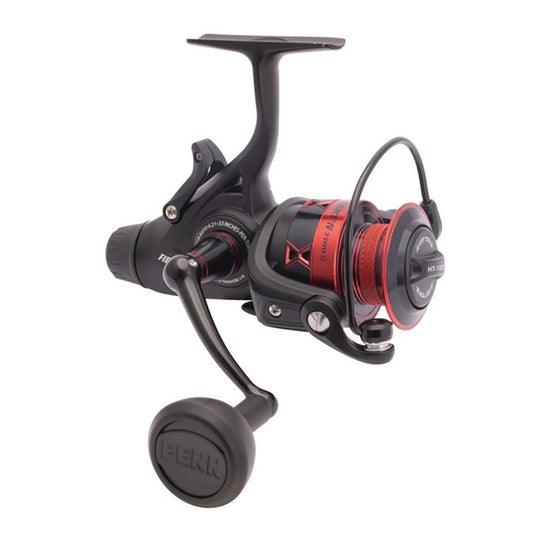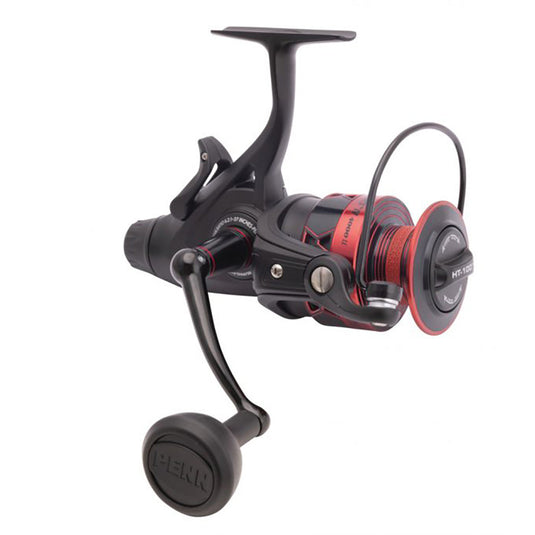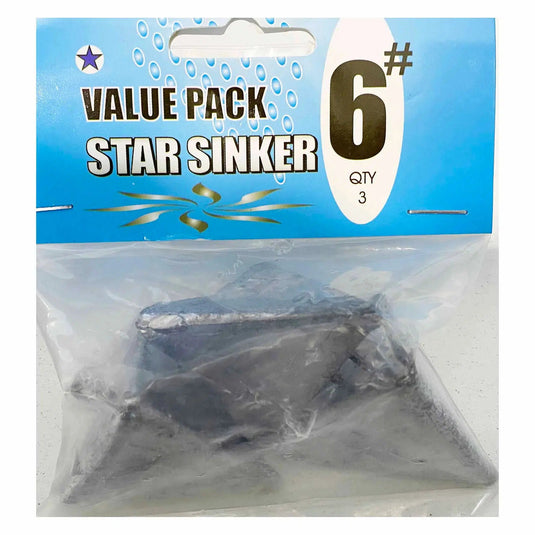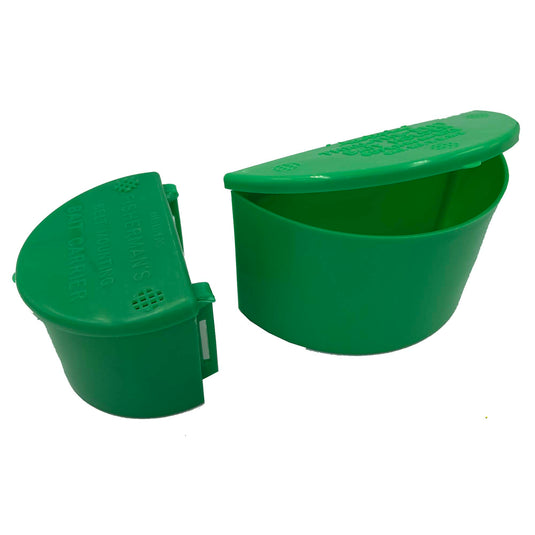SURF JEWFISH GUIDE & GEAR
One of the biggest lures of chasing mulloway is that they are accessible to all anglers meaning you don’t necessarily need a boat to catch big fish. Jewfish of 20kg plus can be caught from the shore and for some it’s a lifelong obsession. For this Gear and Guide we’ll focus on finding jewfish from the sand. The east coast is littered in beautiful beaches and autumn is an awesome time to fish them! The water is warm, the summer crowds have died down and the fishing is great! Yes, even Sydney’s busy city beaches can provide meter plus fish! Let’s break it down.
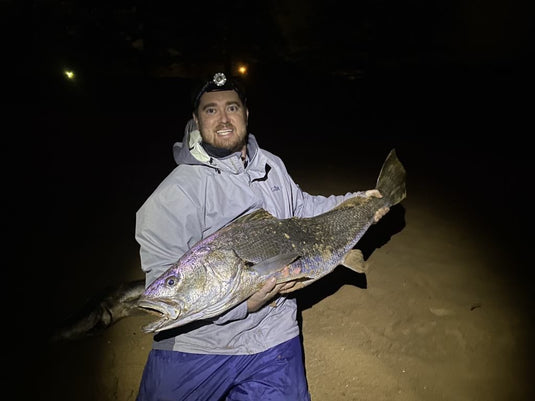
MULLOWAY (Argyrosomus japonicus)
It’s believed the name jewfish has been derived from the original label of “jewelfish” which relates to the fish’s otoliths or “ear bones” which resemble a pearl or jewel. There’s some debate around the purpose of the otoliths as they only form when the fish is around 1 metre in length. For many jewfish anglers these otoliths are a collectors item. The name “mulloway” was adopted during WW2 to deflect from what was happening in Europe at the time.
Naming aside, these powerful fish inhabit estuaries, rivers, beaches, rocky headlands, outer reefs and busy harbours. They can be distinguished by their silver/bronze colouration, big paddle tail and reflective spots along its flank. Jewfish have a key characteristic which is their unique “croak” or “grunt” when caught. They grow upwards of 2m but a fish over 1m is considered a good catch. Their diet consists of smaller fish, crabs, beach worms and prawns.
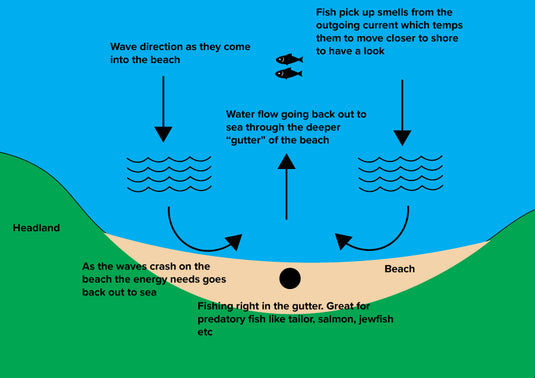
FINDING A SPOT TO FISH
Fishing on a surf beach you’re always looking for structure. Whether it’s a rocky headland or deep gutters, you need something that will provide access for hunting jewfish as well as hold their food.
WHY IS BEACH STRUCTURE SO IMPORTANT
Headlands
Good places to start are the corners of beach headlands, these generally have deeper water running parallel with the rocks and the rocks also provide some good hunting ground however, the rocks can also pose an issue when fighting fish.
Beach Gutters
The best beach structure is a deep gutter that leads out to sea with channels running parallel with the shore. This type of structure creates a natural burley. As the waves crashed and was ashore that water funnels back into the ocean following the channels and eventually leading back out to sea via the gutter carrying with it worms, crabs, small fish and the like. A deep gutter also provides an access point for hunting jewfish to cruise into to find food. If it’s deep enough, big jewfish can push up almost to the shoreline.
Holes
Holes are a little different to a gutter. These deeper parts of the beach don’t drain back out into the ocean.These holes can produce big fish too. Around higher tides jewfish will venture into these holes and cruise around waiting for food. They know these areas can be good spots for small mullet to congregate.
Light
A big thing you need to consider when finding a beach to fish is the amount of unnatural light that may affect the beach. Things like street lights, party lights, car lights etc may annoy hunting jewfish. Especially car lights. There’s nothing worse than cars shining their headlights on the water every 10 or so minutes. Imagine trying to eat your dinner with someone shining a torch in your face (Those with young kids will know this feeling)
TIME AND TIDE
They don’t nickname the jewfish the “silver ghost” for nothing. These fish can be very elusive and with that comes theories on best bite times. Every location will be different but at the end of the day you can’t catch jewfish sitting at home. So the more time you spend fishing the more chance of landing a jewfish. General rule of thumb you want to be fishing at least 2 hours before the high and an 1 hour after. This will ensure there’s enough water for the fish to come close to shore. As for the time - jewfish may feed at all times of the day but it’s best to concentrate your fishing around low light periods and at night. This is particularly important when fishing busy city beaches. During the day it’s a little too busy with swimmers and surfers.
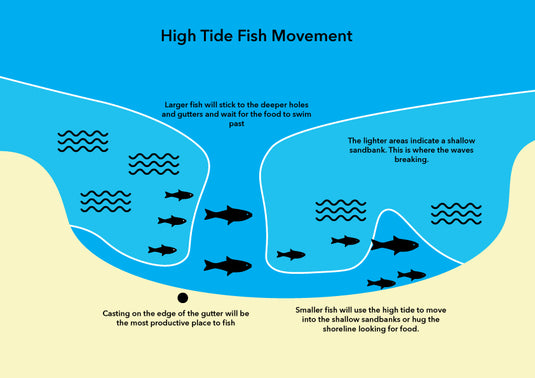
WEATHER, OCEAN AND CONDITIONS
This, in our opinion, is very important for beach fishing. Even if you find the perfect gutter the wind and waves can ruin a fishing session. Firstly, let’s talk about the waves. Waves are important to churn up the water and encourage fish to feed. If the swell is too big it can be difficult to keep your bait in one spot. Alternatively, if there’s too much current or “sweep” generated by the waves can be extremely annoying as it washes your bait down the beach all the time. It’s important to check the wave forecast before fishing. You want to avoid big north east swells (on the east coast) as these swells produce the most sweep and you also want the swell to be lower than 4 to 5 feet or under 2 meters. Some locations have smaller swell due to the direction the beach faces (South facing beaches will be smaller in north east swell but become a magnet for waves when it’s a south swell)
One thing we have to highlight is the cold water phenomenon that occurs on our east coast beaches during summer. When there are repeated seabreezes over a few days this generates what we call a north east wind swell. These swells are small but pack a punch in their ability to sweep water from north to south. Not only it is going to be difficult to keep a bait in the water but the water temp can dramatically drop. You may have gone for a dip in the middle of summer at the beach only to find that it’s freezing. What happens is that the warmer surface water is literally swept away and replaced by cooler water from the deeper parts of the ocean. This cool, clear water can be a real pain and in some cases it stops fish from feeding close to shore. Sometimes the change in water brings algae and you’ll notice this if using braided line as it can stick to the line as you wind it through the water.
WATER CLARITY
This is something that sometimes gets overlooked when beach fishing. We’ve found that when the water is clear and calm the less fish actively feed off the beach. Even bread and butter species like bream and whiting prefer a little bit of churn. As for jewfish, they especially like a bit of churn/discolouration in the water to promote feeding. Big swell can churn the water to make it murky or after lots of rain the water can become murky from the run-off/stormwater drains. Try and fish after big swell and heavy rain as the beaches tend to be more appealing for jewfish to make a visit into the shallows to find food.
When the swell has been small for over a few weeks the gutters tend to be filled with sand and the water is quite clear. This isn’t the best for jewfish and fishing these conditions tend to produce undesirable fish like rays and blind sharks.
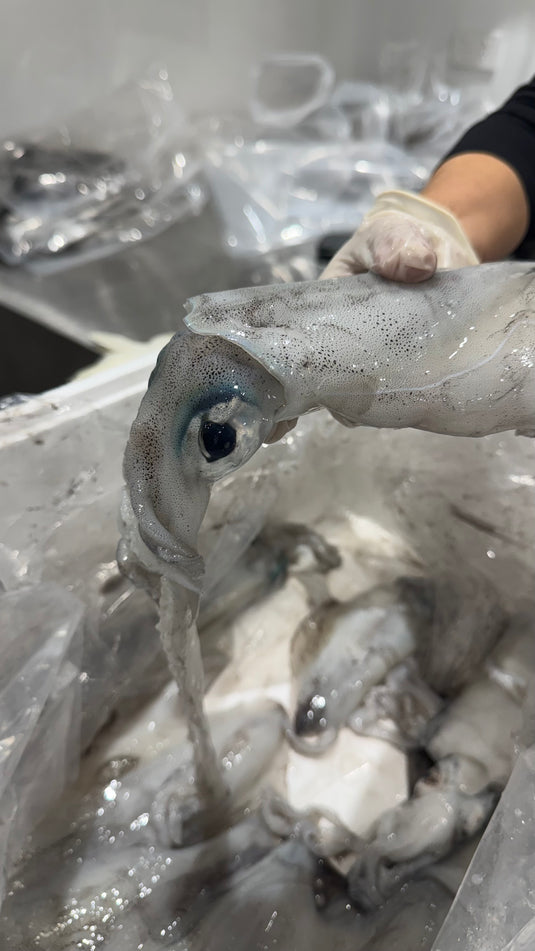
BAIT SELECTION
Bait is always a topic of conversation around jewfish anglers. From our experience it’s a similar application to other types of fishing. Bait should be fresh or live and be a common bait to the chosen location. Small fish such as yakkas and mullet are an awesome bait to start with. Live is best and next best is butterflied fresh fish. By butterflying the fish lets out all the oils and scent from the fish to waft into the current. Squid is another awesome bait. Very difficult to cast out a whole live squid as the impact of the cast will kill it. Best to cut it into long strip baits to fit a two-hook snelled rig. Again, the squid must be fresh! Either caught or bought from a reputable fishing store. Another great bait is beach worms. These critters are one of the best baits to use off the beaches however, if you’re fishing beaches with adjacent rocky headlands and reefs (like the beaches around Sydney) we’ve found that the worms haven’t been as successful as fish and squid baits. However, on the beaches further north which are much bigger and feature less rocky reefs the worms perform better. Other good baits include tailor, whiting, cuttlefish, bonito, garfish and luderick. (Please ensure these fish are of legal length before using as bait)
ROD AND REEL
Beach fishing rods are generally between 10 to 14 feet in length. The extra length helps keep the line above the waves and also provides a longer cast but not all beach rods are made the same.
There are two main types of rods - fibreglass and graphite. There are hybrids of these but the majority of options are made with these two materials. Graphite tends to be lighter and stronger but can be very stiff and less forgiving whereas the fibreglass rods will be heavier but are much more durable and flexible.
For bait fishing or for those getting into beach fishing we recommend fibreglass rods or a hybrid rod that’s graphite at the butt section and fibreglass at the tip. These rods are not only budget-friendly but are much more forgiving when fighting fish in the surf. Unlike fighting fish from a boat, the beach environment it’s a little more difficult to navigate since you’ve got to fight the fish and navigate waves, shore breaks and strong currents. Fibreglass rods are soft enough to absorb the power of the waves and the aggressive headshakes of the jewfish to help prevent throwing hooks in the shoreline. Rods like the Daiwa Beefstick Z are a great option. These rods also feature a sandspike which just makes life a little easier in preventing sand getting into your reel.
Reels
When taking on mulloway from the surf it’s not power you need in a reel but line capacity. Most of the time the fish won’t have rocks or structure to snag you on so you don’t need the power to pull them out of the water rather you need something that can handle the long runs these fish make when hooked! For us it’s the Penn reels that are the best option. The Penn Spinfisher VII or the Penn Pursuit are great reels. These reels are tough, durable and budget-friendly. The best feature of these reels is that they feature carbon drag washers. Carbon drag washers not only create a smooth drag but are much better with handling heat. If you’re catching sharks and jewfish from the surf you’ll soon notice that the long, blistering run put a lot of pressure on your reels and we’ve found that the Penn range is able to handle the heat, sand and salt over and over again.
Surf Fishing Rods
Surf Fishing Reels
LINE, LEADER & TACKLE
Line and leader
Many prefer using mono line for the surf as it’s more durable against the grainy sand however, we prefer braid line. Pairing the braid line with the fibreglass rods provides a great balance in sensitivity and softness that allows you to feel the bites against the wind and waves but soft enough to handle the fight. 4 or 5 strand braid is the best option. It’s slightly thicker than the 8 strand but more durable. Powerpro in the 30 to 40lb is our recommendation.
Leader
Leader is very important! Make sure you use at least a rod’s length of leader. This provides added stretch to the gear plus the mono line is tough and will help prevent break-offs especially when you encounter toothy critters like sharks. You don’t need flourocarbon as such so we suggest mono leader, it’s cheaper and softer - great for the surf environment. The Black Magic Tough Leader is a great choice.
Terminal Tackle
Sizes between 6/0- and 10/0 are a good starting point. Suicide hooks feature a wider hook design which is great when targeting large-mouth fish like jewfish. The Mustad big red hooks are ideal. You can use circle hooks however, in the surf we’ve found J hooks to be more effective. A tip - don’t cheap out on swivels! These things will prevent the dredded line twist. Bearing swivels are great, they are more expensive than the conventional swivel but a much more effective in preventing line twist. Sinkers - It’s best to use a dropper loop for the sinker as this allows you to change your sinker weight according to the current and waves. Star sinkers are the best by far. Try not to use ball sinkers, the reason is that sand can become lodge in the sinker hole and as the sinker runs up and down the line it can damage the line.
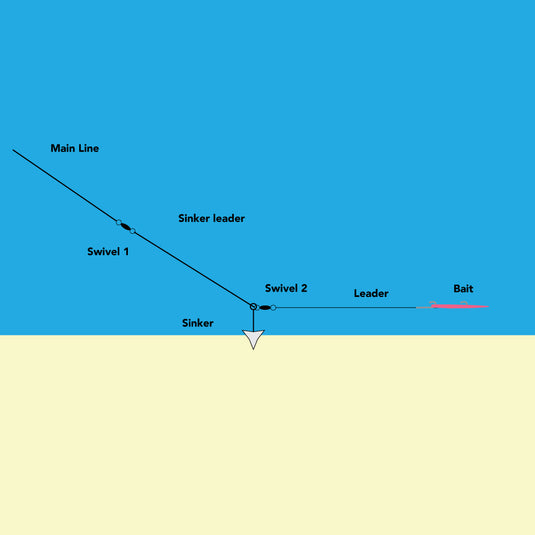
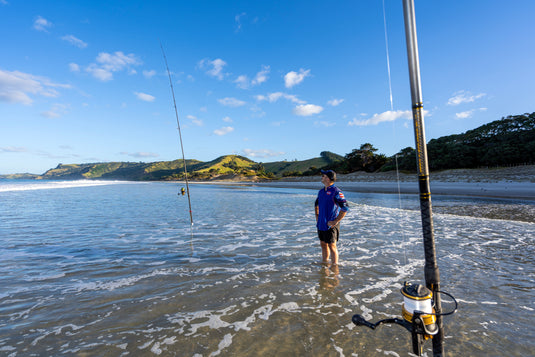
ROD HOLDER OR HOLD THE ROD?
This is the million dollar question. Do you leave your rod in the rod holder on the surf and wait for a bite or do you hold your rod? Like with anything it always comes down to personal preference but in our opinion - always hold your rod. Sometimes even the biggest of jewfish take the most subtle of bites like a bream so you want to be on the rod ready to set the hooks. Another thing that jewfish do is pick up the bait and swim towards the shore. If the rod is in the holder it’s not going to set the hook for you. You need to quickly pick up the slack and set the hook. So, don’t be lazy, hold your rod.
LURES FOR JEWFISH
Jewfish respond very well to lures and luring jewfish from the surf is becoming a popular way to fish! You can use your bait fishing set up to throw lures or switch to a more specific set up that’s a light graphite rod to help with casting and retrieving. A rod like the Penn Prevail Apex Rod . For the lure choice you want something big, heavy for long casts and features plenty of in-built action to attract a fish. Lures like the Z-Man HerculeZ are a great lure. They are pre-rigged so you don’t need to worry about a jig head. Just tie it on and start casting. Concentrate you casts in the gutters as mentioned above. No need to do any fancy retrieves, just wind in slowly and the water currents in the surf will get that paddletail working. You’ll know when a jewfish hits the lure as they tend to smack it like a freight train.

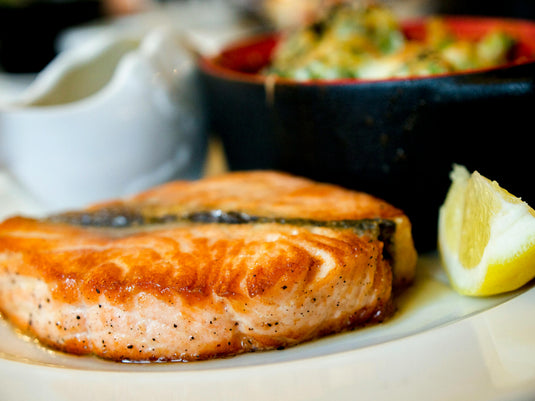
EATING JEWFISH
Jewfish are great to eat. Their flesh is very delicate, similar texture to barramundi so best to cook the fillets with skin on to ensure the meat stays intact. When filleting jewfish keep an eye out for worms. Worms can live inside the muscle and even though these are more common for river jewfish it’s not uncommon to see them in surf jewfish. It’s nothing to worry about as they pose no harm to humans, just remove the worms and ensure the fish is cooked well before eating.
